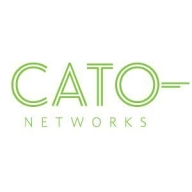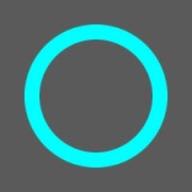

Find out in this report how the two ZTNA solutions compare in terms of features, pricing, service and support, easy of deployment, and ROI.
If you were moving from a traditional on-premise NAC that was 100% managed by the IT department, there would be great savings in going to a cloud-based NAC with Portnox.
Our customer service experience is excellent
They resolved issues quickly and provided clear explanations.
I was seeing weird things, and they were able to explain things to me and help me quickly find a resolution.
They respond very immediately and provide detailed, amazing support.
I would rate the stability of the solution as ten on a scale of one to ten.
The product itself is available and its uptime is 100%.
Ideally, we should be able to search for any MAC address in the database, regardless of its authentication status, to see all its associated groups and potential conflicts.
When I'm doing filtering at times, it doesn't filter the items properly.
They don't have much support during Asia Pacific hours.
The pricing is flexible due to our special partnership with Cato Networks.
The pricing is a bit high, possibly due to the cloud features and running instances across regions like the US, Asia, and Europe.
If you compare Portnox with all other well-known standard products, it is the cheapest.
It is a bit on the high side, but considering the cloud features and how much it costs to run the instance in the cloud, it is not unreasonable.
It's notable how Portnox has improved operational efficiency.
Additionally, it has a great detection and alert tool that is easy to filter and identify any rogue agents or rogue endpoints in our network.
We use Meraki for our switching, making it simple to point all our networks and offices to Portnox.


Cato Networks is a leading SASE (Secure Access Service Edge) platform, combining SD-WAN and network security to obtain a cloud-native service. Cato Networks optimizes and secures application access for users and identities. The platform delivers a next-generation secure networking architecture that minimizes legacy IT infrastructures’ complexity, costs, and risks. The goal of Cato Suite is to connect any user to any application securely and optimally.
Cato Suite runs on a private global network of more than 65 PoPs (points of presence) connected via SLA-backed network providers. The service can connect branches, data centers, users, and clouds. Cato can be deployed in stages to augment legacy network services.
Cato Suite delivers end-to-end route optimization for WAN and cloud traffic. The architecture is self-healing, enabling a high service uptime.
Cato Features
Cato Cloud has a global backbone to deliver a reliable, global network. Here are some key SD-WAN features of Cato Cloud.
What challenges does Cato Network solve?
MPLS (multi-protocol label switching) networks are usually expensive and limited in their capacity. Cato simplifies migrating to a faster, higher-capacity internet and SASE cloud. Cato SD-WAN appliances enable customers to improve usable capacity and resiliency.
Customers who suffer from the challenge of high latency and network inconsistency can use Cato to deliver a consistent connection and user experience to access on-premises and cloud applications.
Cato’s complete network security stack connects all branch locations to the Cato cloud, therefore protecting all traffic, both internet-bound and WAN, with enterprise-grade, cloud-based security services. This capability avoids having to backhaul internet traffic to a data center or hub or having to implement stand-alone cloud security solutions.
Organizations using Cato notice an acceleration of cloud traffic. Cato achieves this by routing all traffic from the edges to the PoP closest to the data center. Because of the close distance between the two, the latency is near zero.
Reviews from Real Users
An IT manager/project coordinator at a healthcare company says that “[Cato is] a cloud-based solution that integrates well with everything. They are the classic SaaS solution.”
Yeong-Gi L., a network engineer at Snetsystems, notes that “The solution is very stable. The scalability is quite good. Technical support was always helpful and responsive. The integration capabilities are not a problem at all.”
"The most valuable feature is that it also works as a next-gen firewall because it has security features," says Lorenzo S., senior solutions consultant Lead at MDI.
Portnox offers Network Access Control to manage user access based on policy, securing both wired and wireless networks while ensuring compliance. It supports endpoint security and prevents unauthorized access across industries such as banking, IT, and energy distribution.
Designed for both on-premises and cloud deployments through CORE and Clear versions, Portnox delivers a straightforward interface aiding in deployment. It integrates effectively with equipment from multiple vendors and security solutions, enhancing endpoint profiling and ensuring compliance. Portnox provides real-time alerts and network activity insights, bolstered by excellent technical support and scalability. It also automates monitoring, reducing the need for dedicated resources while offering a comprehensive view of network activities.
What are the essential features of Portnox?
What benefits should users focus on in Portnox reviews?
Across industries like banking and IT, organizations rely on Portnox for endpoint profiling and compliance, ensuring remote worker security. Electricity distributors leverage its robust features for managing secure network access. Improvements like better third-party integration, enhanced graphical interface, and expanded support are desired, along with licensing adjustment and expanded use of AI and behavioral analytics.
We monitor all ZTNA reviews to prevent fraudulent reviews and keep review quality high. We do not post reviews by company employees or direct competitors. We validate each review for authenticity via cross-reference with LinkedIn, and personal follow-up with the reviewer when necessary.